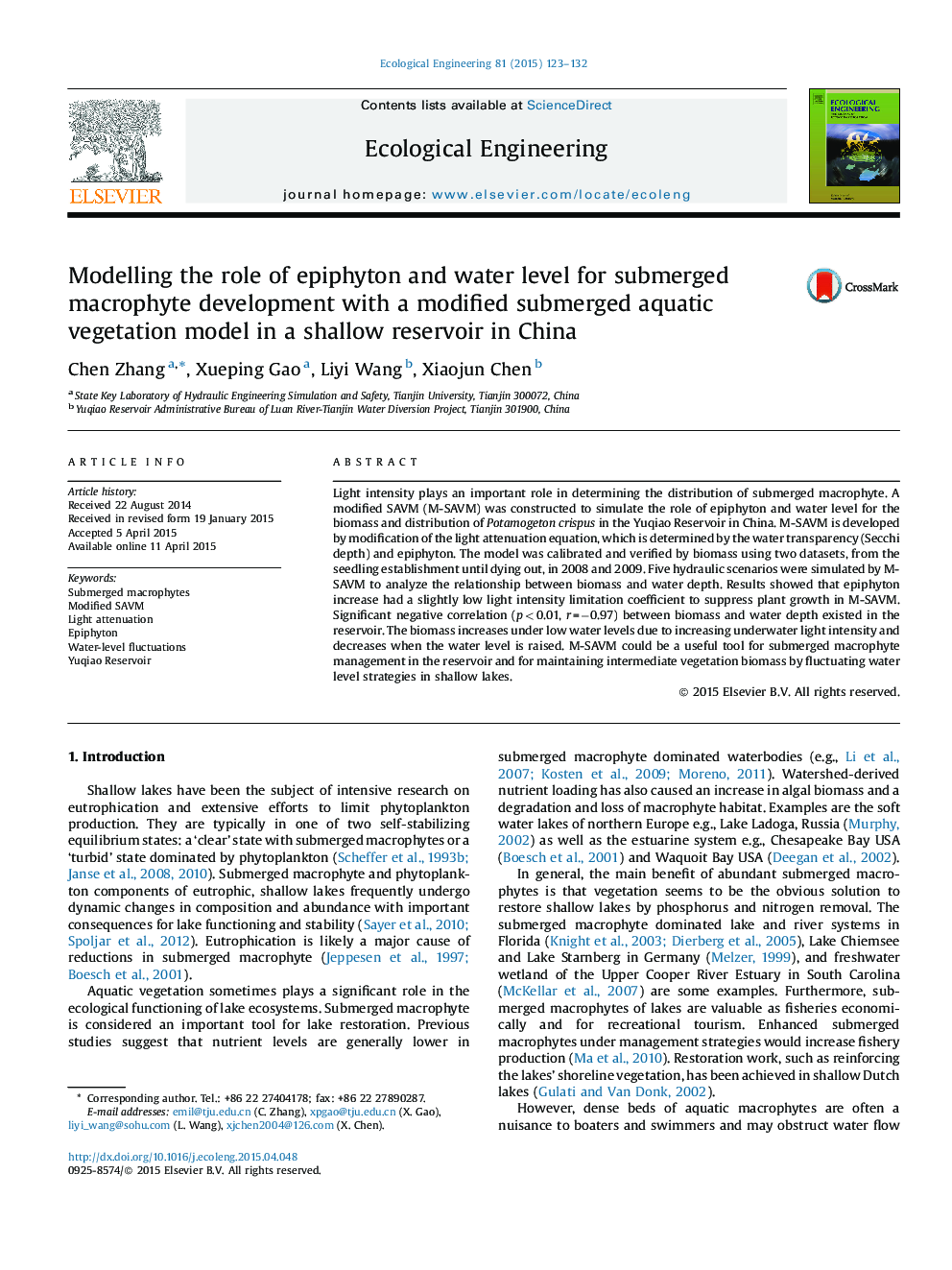| Article ID | Journal | Published Year | Pages | File Type |
|---|---|---|---|---|
| 4389065 | Ecological Engineering | 2015 | 10 Pages |
•A modified f(I) is determined by the water transparency and epiphyton in M-SAVM.•Predictions of late season biomass are improved compared with the original SAVM.•Epiphyton has a certain effect on the submerged macrophyte growth.•A quantitative relationship between biomass and water depth is proposed.•Hydraulic control is a feasible strategy for maintaining intermediate biomass.
Light intensity plays an important role in determining the distribution of submerged macrophyte. A modified SAVM (M-SAVM) was constructed to simulate the role of epiphyton and water level for the biomass and distribution of Potamogeton crispus in the Yuqiao Reservoir in China. M-SAVM is developed by modification of the light attenuation equation, which is determined by the water transparency (Secchi depth) and epiphyton. The model was calibrated and verified by biomass using two datasets, from the seedling establishment until dying out, in 2008 and 2009. Five hydraulic scenarios were simulated by M-SAVM to analyze the relationship between biomass and water depth. Results showed that epiphyton increase had a slightly low light intensity limitation coefficient to suppress plant growth in M-SAVM. Significant negative correlation (p < 0.01, r = −0.97) between biomass and water depth existed in the reservoir. The biomass increases under low water levels due to increasing underwater light intensity and decreases when the water level is raised. M-SAVM could be a useful tool for submerged macrophyte management in the reservoir and for maintaining intermediate vegetation biomass by fluctuating water level strategies in shallow lakes.
Graphical abstractFigure optionsDownload full-size imageDownload as PowerPoint slide
